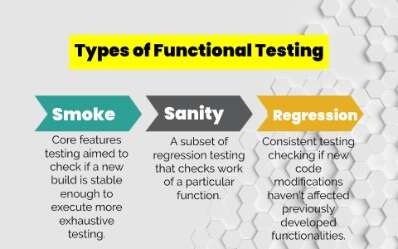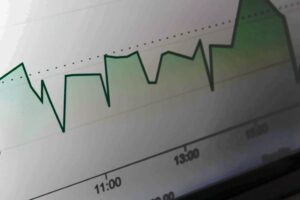All About Heiken Ashi Chart Disadvantages
Contents
Taking this signal into account, exit the market with a profit at the opening of the next candle. The Harami Cross belongs to powerful reverse patterns. It helps determine a trend’s end and the beginning of a new one.
Where, Open – the value of the opening of the current price, Open (i-1) – the price of opening the previous candle, Close (i-1) – the closing price of the previous candle. That is, for the price of opening the current candle is taken the average value between the price of opening and closing of the previous candle. Try displaying those same charts with Heikin-Ashi candles.

To build Heiken Ashi, a formula is used in which price data are entered, while ordinary candles are built exclusively on bare numbers, without using any calculations. Heikin-Ashi Candlesticks are based on price data from the current open-high-low-close, the current Heikin-Ashi values, and the prior Heikin-Ashi values. In the formula below, a “” denotes the current period. These candlesticks do not show a shadow in the OPPOSITEdirection of the trend.
Because the Heikin-Ashi technique smooths price information over two periods, it makes trends, price patterns, and reversal points easier to spot. Candles on a traditional candlestick chart frequently change from up to down, which can make them difficult to interpret. Heikin-Ashi charts typically have more consecutive colored candles, helping traders to identify past price movements easily.
To calculate the next high, choose the max of the current period’s high, or the current period’s HA open or close. The offers that appear in this table are from partnerships from which Investopedia receives compensation. This compensation may impact how and where listings appear. Investopedia does not include all offers available in the marketplace.
Red candles with no upper shadow signal a strong DOWNTREND. Now that you’ve learned how to calculate Heikin Ashi candlesticks, let’s discuss how to use and read a Heikin Ashi candlestick chart. The upward move is strong and doesn’t give major indications of a reversal, until there are several small candles in a row, with shadows on either https://traderevolution.net/ side. Traders can look at the bigger picture to help determine whether they should go long or short. The upward move is strong and doesn’t give major indications of a reversal until there are several small candles in a row, with shadows on either side. Displaying the trend bias on primary bars that display the true price action.
How to use the Heiken Ashi indicator
We also offer MetaTrader 4 software through our platform, which comes with a wide range of technical and customised indicators for each trading strategy. By default, MT4 does not offer Heikin Ashi charts or indicators; however, there are thousands of user-created indicators available for download within the platform. A 50-period simple moving average is added to the following silver daily chart, along with a 12-period SMA. As you can see, there are some smooth trends but also some choppy periods which are ignored by the simple moving average line.

Therefore, the first calculation simply uses data from the current open, high, low and close. The first Heikin-Ashi close equals the average of the open, high, low and close ((O+H+L+C)/4). The first Heikin-Ashi open equals the average of the open and close ((O+C)/2). The first Heikin-Ashi high equals the high and the first Heikin-Ashi low equals the low.
Heiken Ashi
This is the most common strategy for the Heikin-Ashi technique i.e. to identify the beginning of a strong uptrend or downward trend. Signal indicators of Heikin-Ashi are normally considered very reliable and are rarely wrong. Renko charts are not based on time, only price movement, although time is still placed on the x-axis of the chart. One Renko brick could take multiple days to form, while on another day, many bricks may form, depending on how much price action there is. A Renko chart is composed of bricks or boxes of a certain size.
But in terms of trend analysis, it has a lot more claritythan the traditional candlestick chart . A Heikin Ashi chart takes an average of prices to create candles. Renko charts also smooth out price movements, but they use a different formula and have a different look. A red candlestick is a type of price chart indicating that the closing price of a security is lower than both the open and prior close. That is what Heikin-Ashi charts can bring to your trading.
- Close – (open + high + low + close of the current bar)/4.
- Optionally, set a trailing stop if it fits your risk management system to avoid losing money rapidly.
- Determine significant support and resistance levels with the help of pivot points.
- But imagine having to make trend-based decisions after each session .
- Here, almost every Heiken-Ashi candlesticks has a noticeable lower tail.
Spinning tops have small bodies (open-close range) and long upper/lower shadows (high-low range). Despite a lot of movement from high to low, prices finish near their opening point for little change. fx choice review There’s a BIG difference between the two types of candlestick charts. Cory Mitchell, CMT is the founder of TradeThatSwing.com. He has been a professional day and swing trader since 2005.
Hammer
In fact, when the market does start to show wicks on the bottom of the candles, there is a red one, and then another few smaller white candles. This was the last gasp of the uptrend, before rolling over. The lack of range on the last few candles, as well as lower wicks, showed things were changing. For avoid this fatal trading mistake example, the chart below shows an uptrend that eventually formed a couple of long wicks at the top. After those candles, the next three were red, while the second and third had no wick whatsoever on the top. The ability to filter out the noise of a trend has a major effect on how you can exit a trade.

Suddenly, you get a candlestick with a smaller body which is blue in color, followed by a similar one which is red. Japanese technical traders have made a big contribution to stock trading. Heikin-Ashi indicator is a prime example that even a very handy tool like candlesticks can be improved. Another peculiarity is setting green for bullish bars.
Tips for trading price action using Heikin-Ashi candlesticks
However, before using it, traders must understand how it works, as the averaging of prices can also produce pitfalls. The Heikin Ashi — also spelled Heiken Ashi — is both a technical analysis indicator and a chart type, depending on how it is used. Traders that familiarise themselves with Heikin Ashi can use it to their advantage to help determine trends and trend reversals in a wide range of financial markets. This can be applied to different trading strategies also, such as day trading and swing trading. Heikin-Ashi Candlesticks provide chartists with a versatile tool that can filter noise, foreshadow reversals and identify classic chart patterns.
The opening and closing levels, and high and Heikin Ashi low levels of the Japanese candlestick. If a trend is strong, a trader can hold to it and benefit from trading in its direction. For example, scalpers need to exploit quick price moves so they may find that Heikin Ashi charts are not responsive enough for their type of trading. This isn’t really an issue for longer-term traders, like swing traders or position traders, who have more time to let their trades develop. This shows that the color change quickly identified the change in trend as the market dropped from there. Join thousands of traders who choose a mobile-first broker for trading the markets.
Long protruding highs and lows with alternating colors point toward uncertainty
In the image above, you can see that Renko chart fully realizes the goal of filtering out market noise. Renko bricks don’t show patterns like Japanese traditional candlesticks or take time into account. They react exclusively to price data changes in points for a certain period of time. The market picture is often visually different from Heiken-Ashi candles because Renko doesn’t consider sideways price movements. On the Renko chart, there are no black ovals for the market flat. Heikin-Ashi is a Japanese trading indicator and financial chart that means “average pace”.
Bearish candlesticks with no upper shadows point at a strong downtrend. Ultimately, if you see several white candlesticks in a row that have long wicks to the upside, it also can suggest that selling pressure is starting to make its presence known. Identifying candlesticks with no shadows is a very credible signal that a strong bullish trend is starting. This strategy is one of the prime Heikin-Ashi strategies because of its record performance and success rate. So, let’s pull up a traditional candlestick chart in order to see price action in much greater detail.
Limitations of Heikin Ashi charts
The Heikin Ashi candles are instead based on average prices of both the current and prior timeframe. The averaged data also obscures important price information. Daily closing prices are considered important by many traders, yet the actual daily closing price is not seen on a Heikin-Ashi chart. In order to control risk, it is important the trader is aware of the actual price, and not just the HA averaged values. The Heikin-Ashi technique is used with candlestick charts to help traders identify and analyze trends. Heiken-Ashi indicator is calculated based on four parameters.
As a result, the long position is closed with a profit. To show that the Chico Span lows are rising, I connected them with a black line. The day is filled with news and events you need to know, and here’re some of them. Compare this to Heikin Ashi, where it showed a red candle. A review of the benefits of Heikin AshiHeikin Ashi features a smoothing mechanism that takes the average of the recent move, not just the simple high, low, open, and close. This means that you get a better overall “feel” of the trend, or even if there is one.
Even though this first Heikin-Ashi candlestick is somewhat artificial, the effects will dissipate over time (usually 7-10 periods). StockCharts.com starts its Heikin-Ashi calculations before the first price date visible on each chart. Therefore, the effects of this first calculation will have already dissipated. The chart above shows examples of two normal candlesticks converting into one Heikin-Ashi Candlestick.
Since you can’t see the actual open and close prices, some traders prefer to use a Heikin Ashi chart as more of an INDICATOR rather than a price chart itself. The candles will show whether there is real momentum based upon whether or not there are wicks on the candle. If the market is in an uptrend and there are no wicks on the bottom of the candle, this allows the trader to stay with the momentum, trailing a stop loss. Note that when there are several long wicks in a row on one side of the candle, it can present that there is a significant amount of pressure building in the marketplace. For example, when you see several red candles with long wicks on the bottom, that shows that buying pressure is starting to build. A typical candlestick chart will both show the overall trend and how volatile the markets were in a particular candlestick itself.